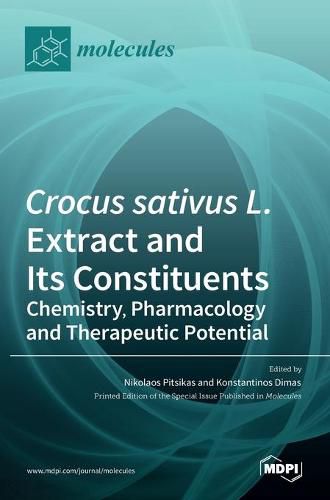Readings Newsletter
Become a Readings Member to make your shopping experience even easier.
Sign in or sign up for free!
You’re not far away from qualifying for FREE standard shipping within Australia
You’ve qualified for FREE standard shipping within Australia
The cart is loading…






This title is printed to order. This book may have been self-published. If so, we cannot guarantee the quality of the content. In the main most books will have gone through the editing process however some may not. We therefore suggest that you be aware of this before ordering this book. If in doubt check either the author or publisher’s details as we are unable to accept any returns unless they are faulty. Please contact us if you have any questions.
Natural products or organic compounds isolated from natural sources as primary or
secondary metabolites have inspired numerous drugs. It is not an overstatement that the
majority of medicines in clinics, even in the 21st century, have been derived from natural
resources despite the decline of industry research into natural products due to a variety
of drawbacks. Saffron crocus, considered to be the most valuable spice by weight, and its
bioactive constituents, have been studied for the treatment of a wide range of
pathologies, including neuropsychiatric and neurodegenerative disorders, cancer,
diabetes, and even cardiovascular diseases. In this book on the chemistry, pharmacology,
and therapeutic potential of Crocus sativus L. extract and its constituents, we aimed to
assess new advances in the understanding of the therapeutic action of saffron and its
constituents in targeting different pathologies. In this context, eight original research
articles covering recent advances in the therapeutic actions of saffron and its ingredients
in different diseases are reported. Two studies reporting novel methods regarding the
bioanalysis of saffron extracts have been included. The collection is completed with two
very interesting reviews reporting advances in the fields of schizophrenia and cancer. In
conclusion, in this book, we are delighted to have received several contributions that we
hope will provide new and interesting information for the scientific community on the
chemistry, pharmacology, and therapeutic potential of Crocus sativus L. extract and its
constituents.
$9.00 standard shipping within Australia
FREE standard shipping within Australia for orders over $100.00
Express & International shipping calculated at checkout
This title is printed to order. This book may have been self-published. If so, we cannot guarantee the quality of the content. In the main most books will have gone through the editing process however some may not. We therefore suggest that you be aware of this before ordering this book. If in doubt check either the author or publisher’s details as we are unable to accept any returns unless they are faulty. Please contact us if you have any questions.
Natural products or organic compounds isolated from natural sources as primary or
secondary metabolites have inspired numerous drugs. It is not an overstatement that the
majority of medicines in clinics, even in the 21st century, have been derived from natural
resources despite the decline of industry research into natural products due to a variety
of drawbacks. Saffron crocus, considered to be the most valuable spice by weight, and its
bioactive constituents, have been studied for the treatment of a wide range of
pathologies, including neuropsychiatric and neurodegenerative disorders, cancer,
diabetes, and even cardiovascular diseases. In this book on the chemistry, pharmacology,
and therapeutic potential of Crocus sativus L. extract and its constituents, we aimed to
assess new advances in the understanding of the therapeutic action of saffron and its
constituents in targeting different pathologies. In this context, eight original research
articles covering recent advances in the therapeutic actions of saffron and its ingredients
in different diseases are reported. Two studies reporting novel methods regarding the
bioanalysis of saffron extracts have been included. The collection is completed with two
very interesting reviews reporting advances in the fields of schizophrenia and cancer. In
conclusion, in this book, we are delighted to have received several contributions that we
hope will provide new and interesting information for the scientific community on the
chemistry, pharmacology, and therapeutic potential of Crocus sativus L. extract and its
constituents.